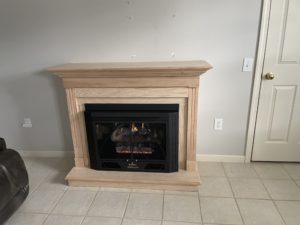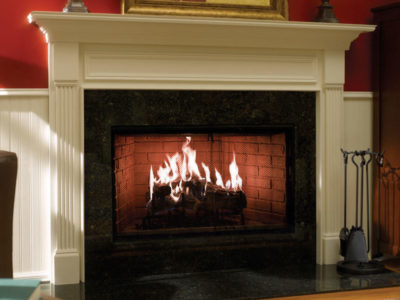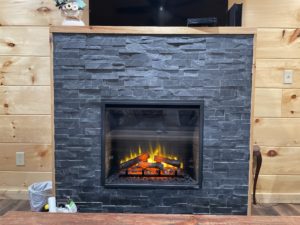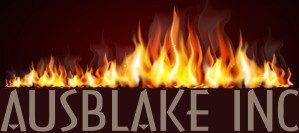Explore the differences between the different types of fireplaces to decide which unit you need. Contact us today for help in choosing the right unit for your home.

Vent Free Appliances
Vent free appliances are a huge producer of heat but there are some drawbacks. By using the inside air of your home for combustion and not exhausting the combustion byproducts outside the home, these units are 99.9% efficient. Vent-free units do alter the indoor air quality of your home. Burning propane or natural gas produces water vapor as a combustion byproduct. Carbon Monoxide is another byproduct of the combustion process also. Vent-free units are engineered to produce very small amounts of carbon monoxide but they do produce it. The tight construction can also be an issue with these types of units due to inadequate fresh air for combustion. Another issue that can arise is smell. Vent-free units will intensify other smells in the home. And the material use to make the logs can also foster odors on their own.

Direct Vent Appliances
Direct Vent units draw combustion air from the exterior and exhaust any combustion byproducts back to the outside. By doing this, these units are not as efficient as vent-free units but they do not alter the indoor air quality. Direct vent units do come in different efficiency levels. Most of the lower and mid level models are less efficient with the higher level models being the most efficient. From linear to traditional, crushed glass or logs, and fronts with a variety of finishes and styles. There is definitely a direct vent that is perfect for your particular style and will fit perfect with your decor.

Wood and Natural Vent Appliances
Wood fireplace and open face gas vented fireplaces have an aesthetic that is hard to beat. The wood units can normally accept large fires and the open gas units have larger flames that looks unbeatable. These units rely on a natural draft as the chimney heats up to draw smoke and heat up the chimney. These are radiant fireplaces and normally only heat directly in front of the unit itself. The amount of air needed for combustion is drawn from the home and exhausts up the chimney under normal conditions. This type of setup has a negative effect on the house as a whole as it cools the rest of the house downs as the fire burns. The tighter construction of new homes can also have a negative impact as these units can downdraft.

Electric Appliances
Electric units come in all shapes, styles and sizes. They can be a stand alone or a built in like any other fireplace unit. These units range from inexpensive units you can pick up in just about any big box store to more quality name brand units. Most of the name brand units can be wired with standard 120 volt or 240 volt. The common characteristic that most all these units share is simple LED lighting and a similar style heater unit. The downside to electric units is that, unless the house has a back-up generator, these units are useless in a power failure. If you are looking to buy an electric unit, purchase one from a reputable dealer. The big box stores have less manufacturer support for replacement parts. The smaller price tag can sometimes come with a higher overall price.
